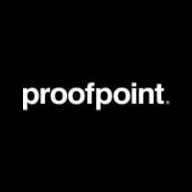

Recorded Future and Proofpoint Nexus are key players in the cybersecurity space. Data comparisons indicate Recorded Future has an upper hand in data analysis capabilities, while Proofpoint Nexus's focus on incident response receives attention.
Features: Recorded Future offers real-time threat intelligence, integration capabilities for predictive analyses, and deep data analysis. Proofpoint Nexus provides advanced threat detection, a secure email gateway, and proactive threat neutralization.
Ease of Deployment and Customer Service: Proofpoint Nexus provides seamless cloud-based deployment, simplifying integration with reliable support. Recorded Future's integration is straightforward but involves more technical input. Proofpoint Nexus is preferred for its ease of deployment and support quality.
Pricing and ROI: Recorded Future is noted for competitive pricing and impressive ROI through analytics. Proofpoint Nexus has higher initial costs but offers substantial ROI due to its security measures. Recorded Future's pricing reflects value, while Proofpoint Nexus's data protection justifies its cost.

Proofpoint Nexus offers robust cybersecurity platforms designed to protect against email threats. Targeting enterprises, it leverages advanced threat intelligence to secure organization's digital communication channels from various cyber threats.
Proofpoint Nexus integrates seamlessly into existing IT workflows, providing layered defense mechanisms to ensure comprehensive security. With its focus on threat intelligence, it delivers actionable insights that empower businesses to preemptively address potential risks. This system is particularly effective in tackling phishing and malware, making it a crucial tool for protecting sensitive data and business operations.
What are the most important features of Proofpoint Nexus?In industries like finance and healthcare, Proofpoint Nexus is implemented to meet strict compliance regulations while protecting against sophisticated cyber threats. Its tailored approach addresses sector-specific challenges, ensuring both data protection and regulatory adherence without hindering operational workflows.
Recorded Future is a powerful and effective cyber threat intelligence (CTI) platform that aims to empower administrators to protect their organizations from threats, both known and unknown. The machine learning engine that Recorded Future utilizes can process the same amount of data that 9,000 analysts working five days a week, eight hours a day for an entire year can process. It simplifies threat detection and remediation so that organizations can focus on other tasks.
Recorded Future Benefits
Some of the ways that organizations can benefit by choosing to deploy Recorded Future include:
Recorded Future Features
Some of the many features Recorded Future offers include:
Reviews from Real Users
Recorded future is a solution that stands out when compared to its top competitors. Two major advantages it offers are the threat research tools that it provides and the threat monitoring capabilities that it enables users to leverage.
A security operations lead at a comms service provider writes, “Recorded Future covers a lot of different use cases. For example, we are using it for threat intelligence research. We do use the tool to make active research on what is found around the threat. We look at patterns, for example, and see what can be elaborated on from that.”
They also write, “We can also use it for active monitoring in the customer interface. We can monitor the business side of a campaign. We can monitor for specific threats or market activity on the dashboard. We can develop queries to run in a continuous mode in order to get the best reviews.”
We monitor all Threat Intelligence Platforms reviews to prevent fraudulent reviews and keep review quality high. We do not post reviews by company employees or direct competitors. We validate each review for authenticity via cross-reference with LinkedIn, and personal follow-up with the reviewer when necessary.